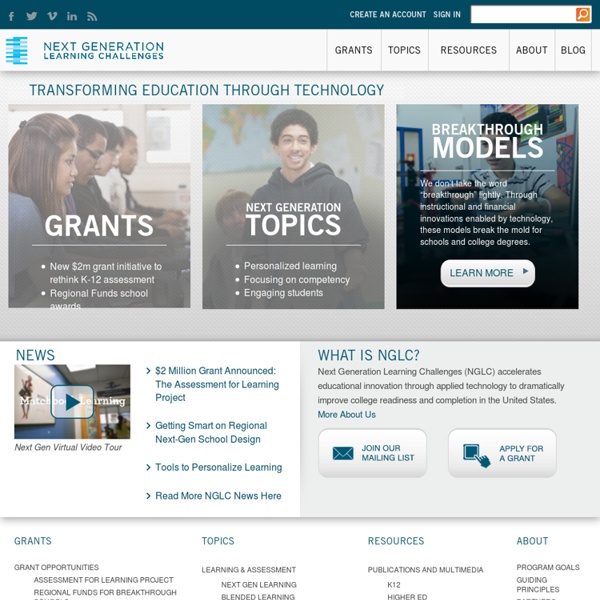



The Special Sauce of Social Learning by Marc J. Rosenberg “The bottom line is that for social learning to be accepted and used, it must be a seamless and natural part of the workplace, and the work. Failure to focus on all the ingredients for successful social learning is a showstopper and will kill it in its tracks.” Years ago, when McDonalds introduced the Big Mac, it wanted to separate its new sandwich from the rest of the crowd. It was the sauce, they said, that made it unique. In the new era of social media, we must fully understand what makes one social learning experience stand out and another peter out. The eight ingredients of great social learning These efforts are organizational, cultural, and strategic in nature, as well as technological. Make the tools and technology insanely easy to use. Make it all-natural The bottom line is that for people to accept and use social learning, it must be a seamless and natural part of the workplace, and the work. Remember, social media technologies have no value.
How student empowerment drives blended learning and other tips from experts in the field Blended learning can lead to student agency — the enabling of informed, empowered learning — when it gives students choices about what, where, when, and how they learn. A group experts* recently shared blended learning strategies in Next Generation Learning Challenge’s #NGLCchat on student agency. (NGLC’s founding partners include The Bill and Melinda Gates Foundation, which is also a funder of The Hechinger Report). Their ideas follow. Blended learning leads to student agency when it is about the learner, not the technology, the test, or even the school, but when it reaches ALL students. Education consultant Chris Watkins has identified performance-focused practices he calls “space invaders” because they take up space in the classroom that should be devoted to learning practices. Classrooms that engage in blended learning practices free up time and space for students to be true agents of their learning. Blended learning facilitates active, authentic student roles.
Lehre : Hier rein, da raus | Studium Universitäten sollten endlich die Vorlesung abschaffen Speichern Drucken Twitter Facebook Google + Hochschulen pflegen wieder ihr Brauchtum. Dass dies ein Mythos ist, zeigt eine Studie des Nobelpreisträgers Carl Wiemann von der University of British Columbia. Anzeige Während der Professor den Stoff als klassischen Frontalvortrag verabreichte, griff der Postdoktorand in die didaktische Methodenkiste: Er ließ die Studenten zu zweit oder in Kleingruppen diskutieren, testete mit Multi-Choice-Fragen per Knopfdruck ihren Wissensfortschritt und gab ihnen als Hausaufgabe Lesestoff, der anfangs jeder Veranstaltung wiederum mit einem Quiz abgefragt wurde. Der neue reformfeindliche Retrotrend an den Universitäten feiert die traditionelle Vorlesung neuerdings gar als besonders gelungene Form der Meister-Schüler-Beziehung. Das Ergebnis kann jeder sehen, der sich einmal in die hintere Reihe einer Vorlesung setzt und auf die Bildschirme der aufgeklappten Laptops schaut.
Kolay Gelsin! Das vom Europäischen Sozialfonds (ESF) geförderte Xenos-Programm "Integration und Vielfalt" unterstützt bundesweit Projekte, die insbesondere die arbeitsmarktliche Integration von Jugendlichen mit Migrationshintergrund in Schule, Ausbildung und Beruf fördern. "Kolay Gelsin! - Ausbildungstag in der Moschee - Eine Chance auf (d)einen Ausbildungsplatz" richtet sich an türkischstämmige Heranwachsende und ihre Eltern. Bei Veranstaltungen in 75 Moscheen im Großraum Rhein-Ruhr erhältst Du wichtige Informationen und eine persönliche Beratung von Experten im Bereich Ausbildung. U.a. werden folgende Fragen behandelt: - Warum eine Ausbildung machen? - Welcher Beruf soll's sein? Das Projekt wird von der Akademie Klausenhof durchgeführt, das sich seit 1973 intensiv mit Fragen der Migration und Integration befasst. Unsere Aktivitäten: Besuchte Moscheen (rot) - Stand: Juni 2012 Fotos von Veranstaltungen in Moscheen (Auswahl) Eröffnung mit Minister Laschet in Duisburg Veranstaltung in Wesel
Association for Authentic, Experiential and Evidence-Based Learning (AAEEBL) - Home for the World ePortfolio Community Aktuelles- gmk-net.de Neue Chancen für Demokratie und Medienpädagogik Klaus Lutz/Eike Rösch/Daniel Seitz (Hrsg.) Das Internet bietet eine Vielzahl an Gelegenheiten von politischer Beteiligung für Heranwachsende. Wie können (junge) Bürgerinnen und Bürger überhaupt motiviert werden, sich an gesellschaftlichen Diskursen zu beteiligen und welchen Einfluss hat eine solche zivilgesellschaftliche Beteiligung? Der 47. mehr Buchbestellung unter www.kopaed.de Ein Jahr lang wird alle zwei Monate ein anderer Beitrag aus dem Buch als PDF-Datei zum Download bereitgestellt . Sonja Reichmann: "ePartizipation in Jugendverbänden" Hier finden Sie eine Übersicht der Artikel .
Academic Commons Online papers on consciousness Search tips There are three kinds of search you can perform: All fields This mode searches for entries containing all the entered words in their title, author, date, comment field, or in any of many other fields showing on OPC pages. Surname This mode searches for entries containing the text string you entered in their author field. Advanced This mode differs from the all fields mode in two respects. Note that short and / or common words are ignored by the search engine.
und spricht » Birkenbihl schreibt didacta Deutscher Bildungsserver: Neuigkeiten Welcome to Cogprints birkenbihl denkt Teaching Ten Steps to Better Web Research - Supplemental Materials The presentation on "Teaching Ten Steps to Better Web Research" is a PowerPoint that I have uploaded to our account on SlideShare. Where the footnoted material is available online, it may be accessed by clicking on the highlighted text below. 1. Prensky, Marc. “Digital Natives, Digital Immigrants” : On the Horizon. 2. 3. 4. 5. 6.UCL. 7. 8. 9. 10. 11. 12. Dulcinea Media Ten Steps to Better Web Research SweetSearch SweetSearch4Me Yolink Primary Sources? Do not hesitate to contact our CEO at Mark [dot] Moran [at] DulcineaMedia [dot] com with any questions. Sign-up for our free daily newsletter "Like" findingDulcinea on Facebook "Like" SweetSearch on Facebook Follow findingDulcinea on Twitter Dulcinea Media provides free tools and content that help educators teach students how to use the Web effectively. 9 Ways We Help Educators Teach Students How to Use the Web How We Help Social Studies Teachers Integrate the Web into the Syllabus Why SweetSearch is the Best Search Engine for Students